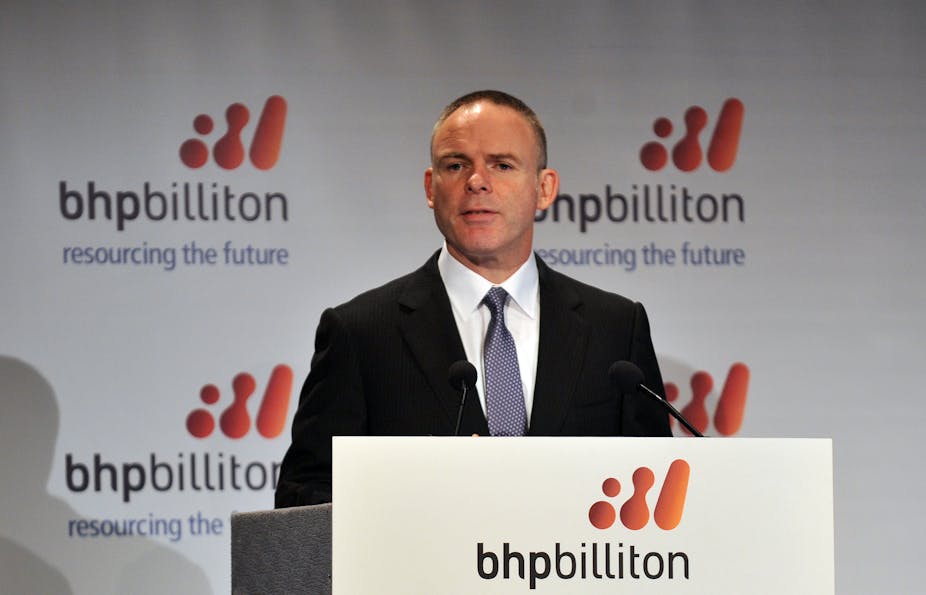It has been an anxious day for Australian investors. Shares have dipped as the market awaits BHP Billiton’s full-year profit report.
It is expected that the market heavyweight will post its first profit fall in three years, although the estimated $17 billion net profit figure is still a tidy sum. Nevertheless, speculation over BHP’s earnings has reignited debate over the lifespan of the boom.
Peter Sheehan, Professorial Fellow at the Centre for Strategic Economic Studies at Victoria University, shares his thoughts on the state of Australia’s resource sector.
It is widely anticipated that BHP Billiton will announce its first profit fall in three years, which has led to some commentary suggesting that it marks the “symbolic end of the mining boom”. To what extent is that true?
I think we have to define precisely what we mean by the “end of the resources boom”. There are three different things that people might mean.
The first is the end of the period of very high commodity prices and high terms of trade. We know that ended some time ago. Prices have been coming off, and the terms of trade - although still very high - have been falling.
The second meaning is the end of the period of very high resources investment - that isn’t coming to an end yet. Although it is the near the top, the Reserve Bank of Australia said this week that they expected it to peak in 2013-14. We are indeed coming close to a peak in investment. It might well drop sharply after passing the peak.
The third thing people might mean is the high dollar exchange rate. There’s no sign of that coming to an end.
So we can’t talk properly about whether the resources boom is ending; some parts of it have ended and some parts of it are still going on for a while.
Much market commentary has centred on the deferrals and delays of several slated investment projects. But the production side of the boom is not yet in full swing.
The production side is starting to build up, and will build up really quickly once projects are completed. That’s going to go on, market conditions allowing, for five or six years. We will see the continuing build-up in resources output and exports.
From an economic point of view, the production side of the resources uses very little labour. It’s very high productivity. Once we get past the construction, the labour requirements fall dramatically. Mining is also 80%-plus foreign owned, so it doesn’t generate much income within Australia.
So the resources production and export side will look good in the numbers, but doesn’t actually do much for employment and income within Australia.
Given this scenario, what sort of policies should we be considering?
Nationally, we haven’t started to address what lies beyond the resources boom, which has been a major stimulus to the domestic economy for 10 years. As that stimulus runs off, we are going to need some different policies. We are going to need expansionary fiscal policy - which will mean deficits - and we are going to need to find real ways of getting infrastructure built on a large scale, and fixing problems in the housing sector. That’s a start.

